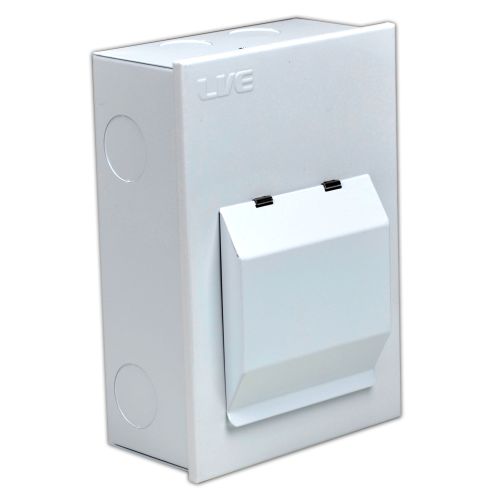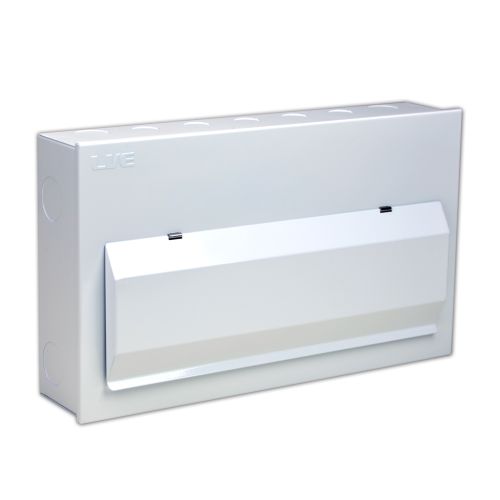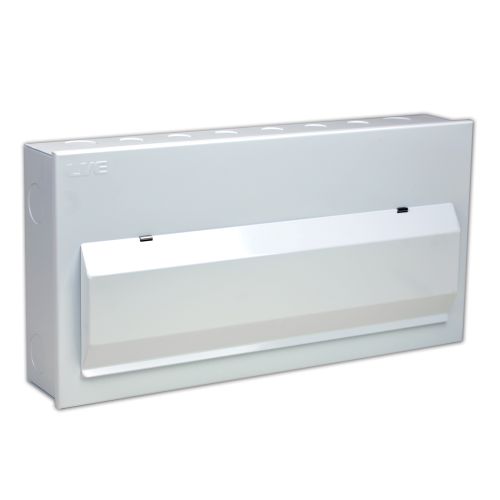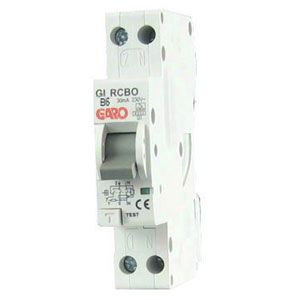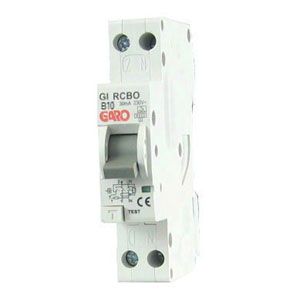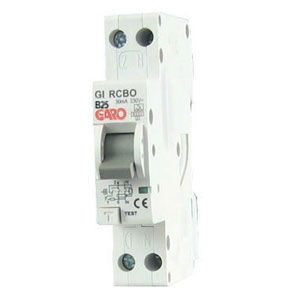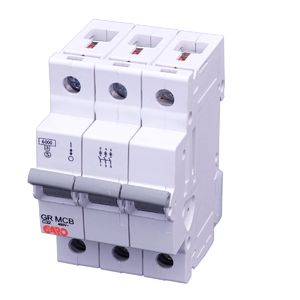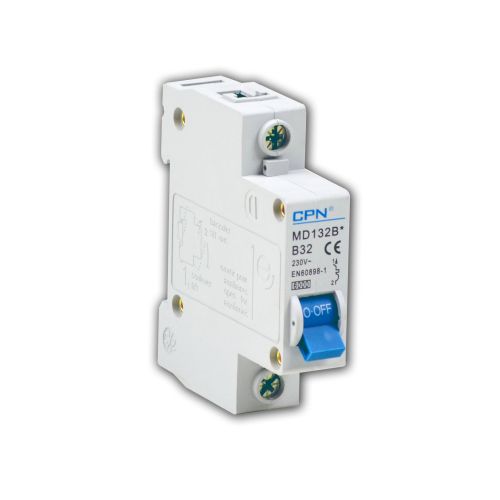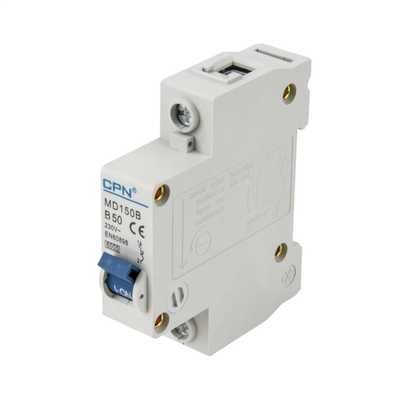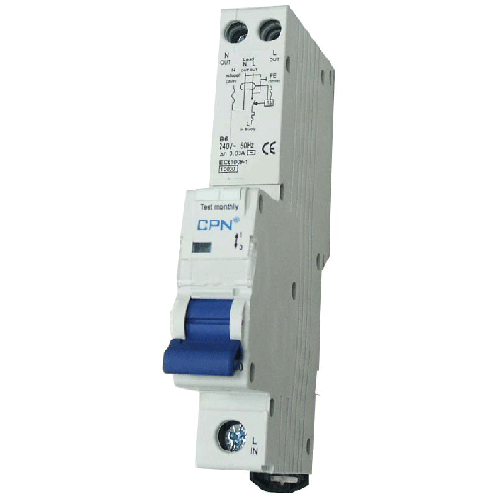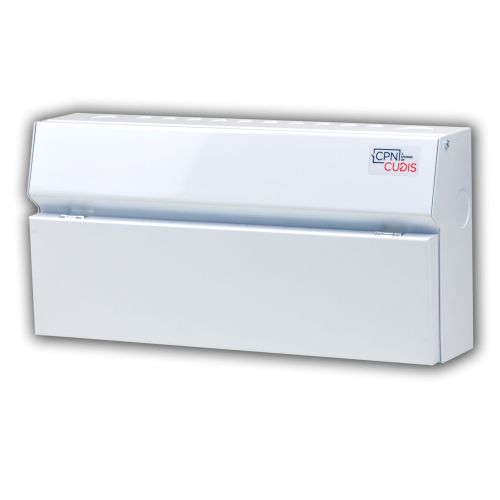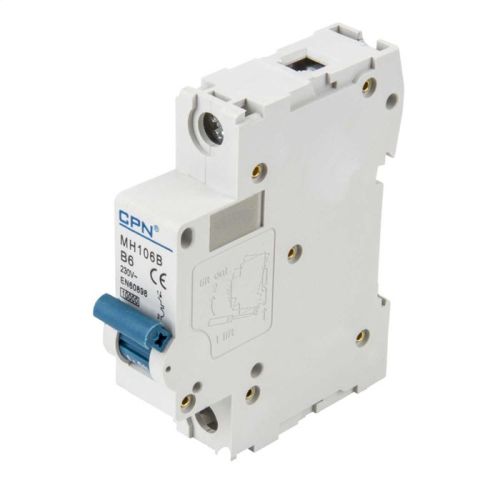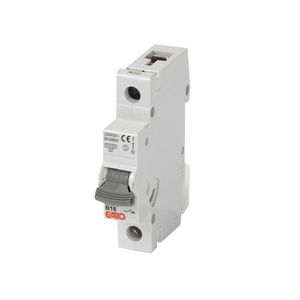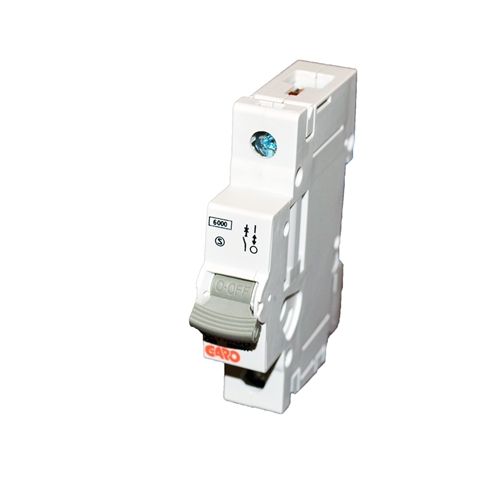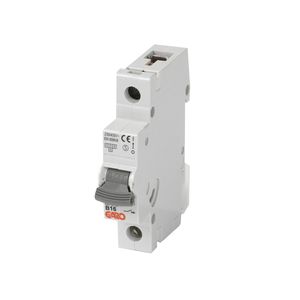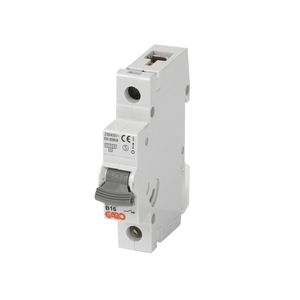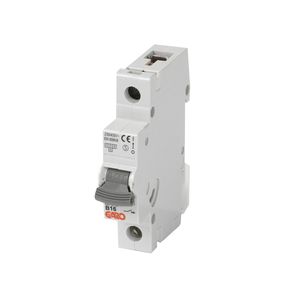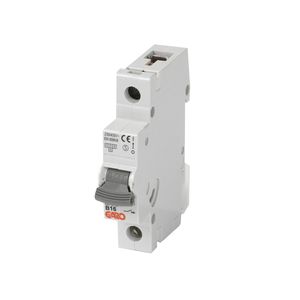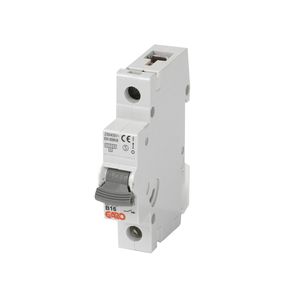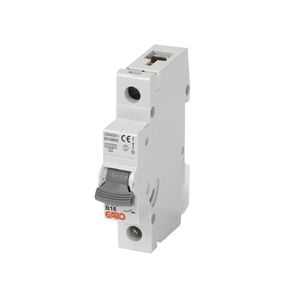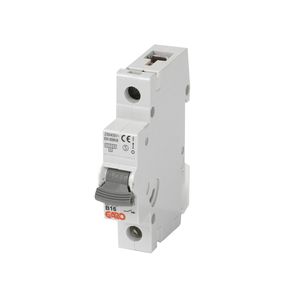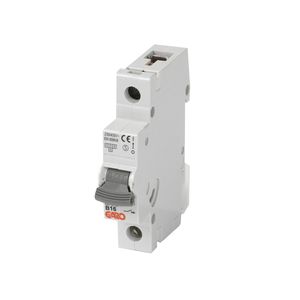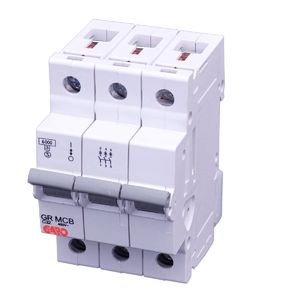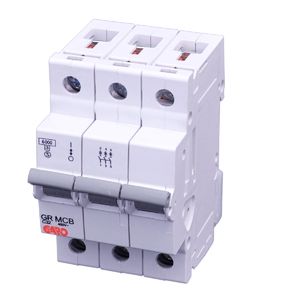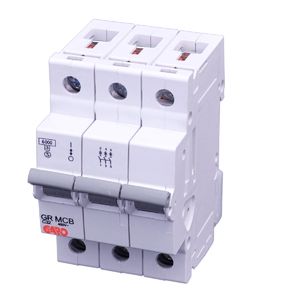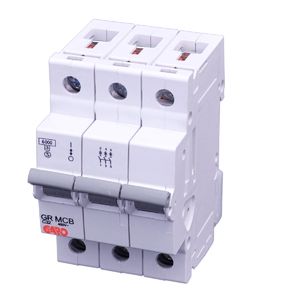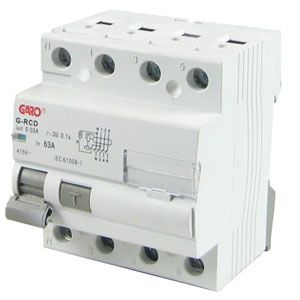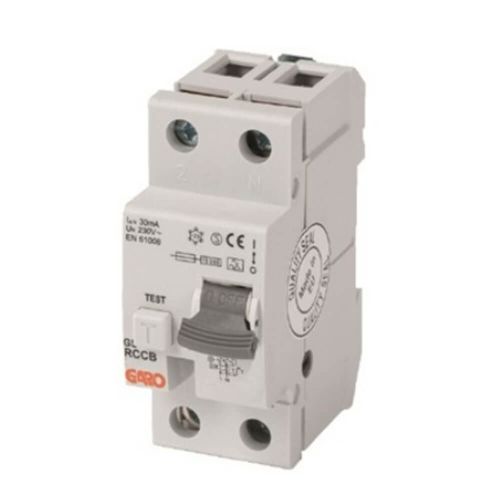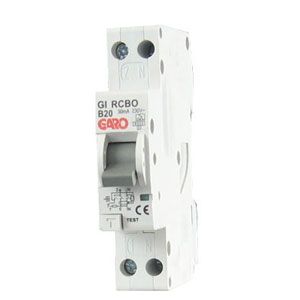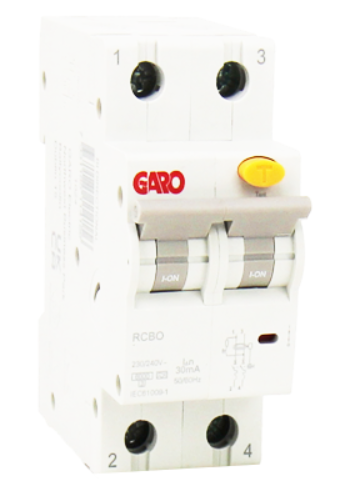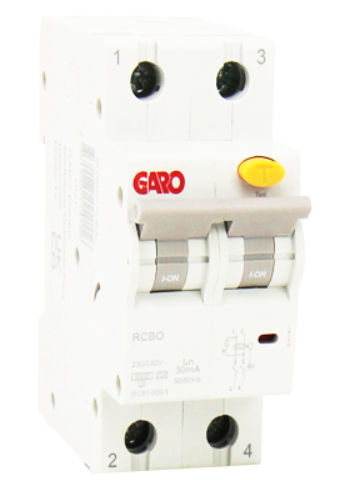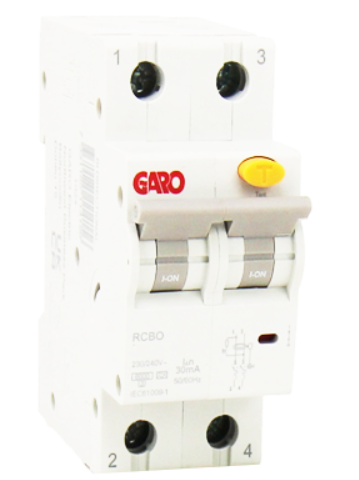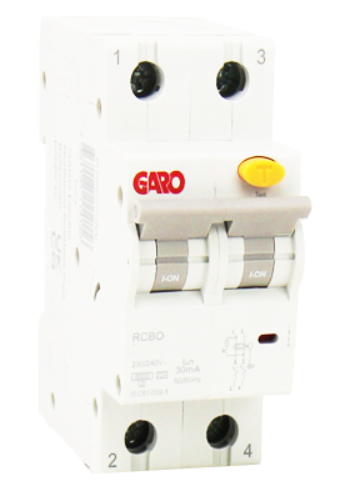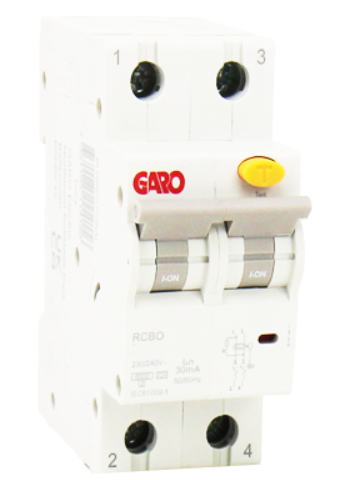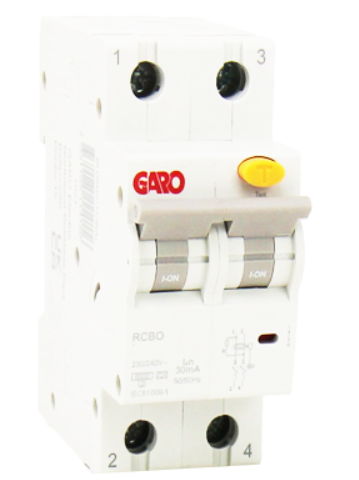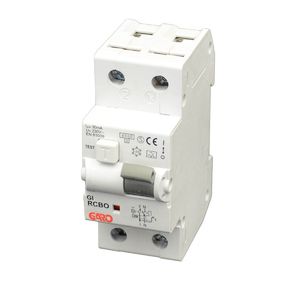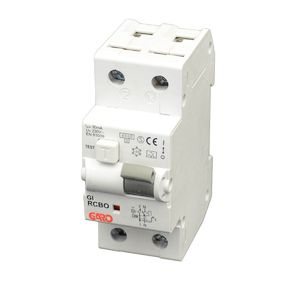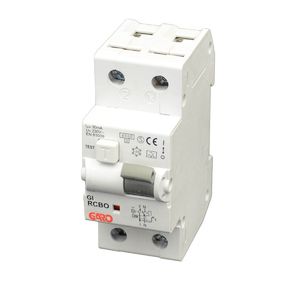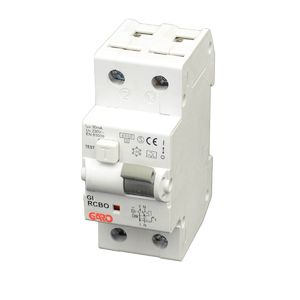Consumer Units
A consumer unit (also known as a fuse box) is there to control and distribute the incoming electrical supply and protect your property from electrical hazards. A domestic consumer unit is made up of three major components – the main switch, residual current devices (RCD), and circuit breakers.
Each component has its own role, for example, the main switch is the primary connection between your property and the mainline. And RCDs and circuit breakers are there to uphold safety measures as they can turn off automatically in case of abnormality in the power supply. In addition, busbars and other accessories within this category play a vital role as well because they conduct electricity while reducing the amount of power loss within your distribution board simultaneously.
Here at Meteor, we offer a wide range of consumer units with surge protection and accessories from leading electrical consumer unit manufacturers. UK-based such as Garo, as well as Proguard, and Gewiss, to name a few. The products available include RCD’s, MCBO isolators, MCB Consumer Units, and incomers – each of these products meets regional standards and is suitable for installation in the UK and Ireland.
We also offer you a large choice of domestic consumer unit accessories such as mini circuit breakers (MCB’s), Residual Current Devices (RCD’s), and Residual Current Circuit breakers with Over Current Protection (RCBO’s), etc. that are ideal for installation within our consumer units.
At Meteor, we provide a wide range of the best consumer units in different sizes from mini consumer units to large consumer units to various consumer unit types including priority & non-priority units. Our range of consumer units is also available in PVC and metal. Our metal consumer units are designed to be fire-resistant.
You can view our metal consumer units, plastic consumer units, spit load consumer units, and domestic consumer unit accessories for top branded products at the best prices available online right now.
To learn more about consumer units and their components, here's a deeper dive into all the information you need.
For further inquiries regarding the best consumer unit for homes or businesses, please contact our expert team via telephone, email, or via the “live chat” option at the bottom right of your screen.
Consumer Units Explained:
What is a Consumer Unit?
You might wonder what is a consumer unit? In simple terms, an electrical consumer unit is considered the most critical electrical appliance of your home or business. The purpose of the electrical consumer unit is to protect electrical appliances from damage and shield humans from electrical shock. The electrical consumer unit is made up of separate components to protect your building and yourself. The electrical consumer unit is made up of numerous pieces, including a mains switch, residual current devices (RCDs), and circuit breakers, and is responsible for powering all the circuits in your home.
Inside of a Consumer Unit:
Every home has a consumer unit, which distributes and manages the electricity that enters the house via numerous conduits. Look inside a consumer unit to see what the major parts are.
The simplest and most common electrical consumer unit is the main switchboard which is supplied with a 100A isolated. In the beginning, when the 17th Edition regulations came into the field it was very uncommon to see a switchboard that came without RCDs.
However, today it is believed the best way to comply with 17th edition regulations is to use a full bank of RCBOs as this allows for the circuits to be separated so that there are no nuisance trips. However, the problem with this is that the RCBOs can be seen as much more costly than RCDs with MCBs. However, given their benefits, most homeowners will pay the extra money as it provides them with peace of mind that their home is fully protected.
Check out this helpful video: Consumer Units Explained:
Credit: The Engineering Mindset
Now that I have explained what a consumer unit is. Lets dive into the different types of consumer units.
There are a number of different types of consumer units available today; the consumer units are explained below to help you get an understanding of their purposes and their different roles in both homes and businesses.
Different Types of Consumer Units:
I have highlighted the different types of consumer units which include high-integrity consumer units, split load consumer units, and garage consumer units.
High Integrity Boards/ Electrical Consumer Units:
Types of consumer units- What is a high-integrity consumer unit?
Many people wonder “what is a high-integrity consumer unit?”. A high-integrity consumer unit works simply through the circuits being separated through three natural bars. These neutral bars mean that two RCDs can be used along with a bank of RCBOs.
The design of the high-integrity consumer unit is particularly useful for the homeowner as non-mission-critical circuits such as lighting can run through the RCDs while protecting mission-critical circuits via the RCBOs. For example, if there was a problem with an appliance such as the freezer this will have no effect on the smoke detectors in the home.
Split Load Electrical Consumer Units:
What is a Split Load Consumer Unit?
A spilt load electrical consumer unit is supplied with a mains switch and an RCD. This type of electrical consumer unit is ideal for the 17th edition Regulations as it protects circuits against leakage while still being able to decrease the risk of nuisance tripping.
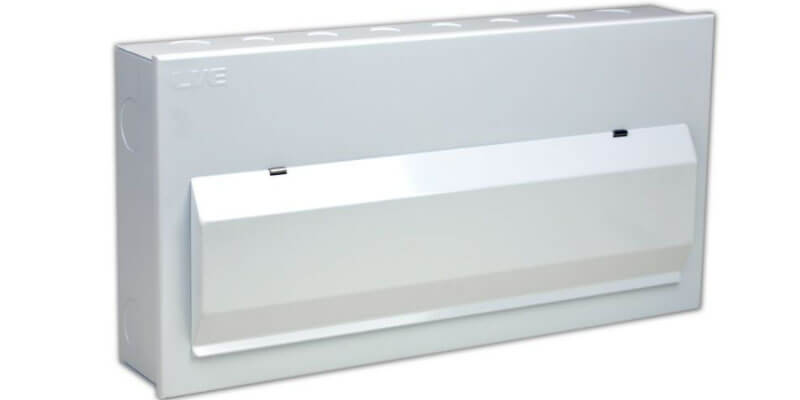
How to Wire a Split Load Consumer Unit
Watch the video below on how to wire RCDs in a split load consumer unit:
Garage Electrical Consumer Units
What is a Garage Consumer Unit?
The phrase “garage consumer unit” is merely given to small garage consumer units and is not solely confined to the garage. It basically implies that any environment that has a small number of circuits would use a garage consumer unit such as garages, sheds and outhouses as they do not need a large fuse board that would be used in a house.
Garage consumer unit itself usually is between two and five way depending on what they are needed for. For example, a shed with a few sockets and some lighting would use a two way consumer unit however a larger building such as a workshop with lots of tools and lights would need a five way consumer unit.
How to Wire a Garage Consumer Unit:
Below is a video on how to wire a RCD in an garage/shed consumer unit. t.
Our Small Consumer Units Range:
At Meteor Electrical, we stock small consumer units from 2 way consumer units up to 18 way consumers. Our range of small consumer units are suitable for domestic uses and within garages and sheds.
- 2 Way Consumer Units
- 4 Way Consumer Units
- 6 Way Consumer Units
- 8 Way Consumer Units
- 12 Way Consumer Unit
- 14 Way Consumer Unit
- 16 Way Consumer Unit
- 18 Way Consumer Unit
Our Large Consumer Units Range:
We also stock large electrical consumer units over 20 ways up to 75 ways to suit the needs of your business or home. Our range of large consumer units is commonly used within commercial and residential environments. If you can’t find a consumer unit big enough for your project, check our TP&N distribution range. Learn about 3 phase distribution board range here.
- 22 Way Consumer Unit
- 24 Way Consumer Unit
- 28 Way Consumer Unit
- 36 Way Consumer Unit
- 42 Way Consumer Unit
- 54 Way Consumer Unit
- 75 Way Consumer Unit
Electrical Consumer Units Regulations:
There are many electrical consumer unit regulations you need to be aware of within the UK and ROI. Continue reading to find out more about electrical unit regulations.
Consumer Unit Mounting Regulations
Electrical consumer units had to be mounted to be conveniently accessible and positioned at a height of between 1350mm and 1450mm above the floor level, safe from young children. There are different regulations for electrical consumer units in the UK and the Republic of Ireland. I have explained the consumer unit regulations below
Electrical Consumer Units UK:
Since the 17th Edition of the IET Wiring Regulations was introduced, all electrical consumer units within the UK must be either enclosed in a non-combustible material or placed in a non-combustible cabinet.
Metal consumer unit boards help avoid overheated connections; if a fire started within metal consumer units, it would be contained for a longer period whereas, if a fire started in a plastic consumer unit the risk of spread is greater.
These UK regulations for electrical consumer units were put in place to limit any fires that erupted within the UK metal consumer unit's consumer units, thereby preventing the spread of flames. These laws would apply to consumer units constructed of non-combustible metals such as steel.
Electrical Consumer Units ROI:
Electrical Consumer Unit Boards used in the Republic of Ireland have different regulations. There are four main regulations of I.S. 10101 are:
- Every electrical consumer unit board must include a Double Pole Isolator Switch which is used to interrupt both live and neutral conductors of the board.
- RCDs must be included in the distribution board to protect all luminaire circuits.
- Surge Arrestors are mandatory in electrical consumer units. A risk assessment must be produced and include as to why the surge protection is not included in the board.
- For AC final circuits supplying luminaires in domestic premises, additional protection in the form of an RCD with a rated residual operating current not exceeding 30mA must be provided. In lighting circuits, an overcurrent protective device with a rating of 6A for 1.5mm copper conductors and 10A for 2.5mm copper conductors should be employed.
Garo has created two different electrical consumer unit boards to satisfy the regulation which include:
- 2 Row 7 Way Consumer Unit c/w Main B63 MCB (Type A)
- 2 Row 7 Way Consumer Unit c/w Main B63 MCB (Type B).
Watch the video below of David Quigley (Garo’s Sales Engineer) to get an overview of the two electrical consumer unit boards and the I.S. 1010 Regulations:
Main Components of a Consumer Unit
Main Switch
Most people confuse the main switch for the domestic consumer unit, but the main switch is only one part of the whole device and a key component at that. The main switch is a central switch that controls the entire power supply within a single property that the consumer unit is attached.
If the main switch is turned on, it is only then the power will be on, and if you turn it off then the power will be disconnected and turned off. While other components such as the RCDs and circuit breakers can be turned off automatically, the main switch has to be turned on or off manually.
Usually, there isn’t a need to frequently switch it on or off but in some cases, it may become necessary. For example, if there is repair work to be done on the power supply then the main switch will have to be turned off. Disconnecting the power supply is what will ensure your safety.
RCD – Residual Current Devices
The safety switches present inside an MCB consumer unit that constantly monitor the power supply are called the Residual Current Devices (RCDs). The entire power supply of an area (like a building or factory, for example) is split into several circuits. Various electrical appliances are connected to these circuits through which electric current passes in order to make them work.
Every RCD has its own power rating and if the power supply crosses that rating, it means an overload is occurring and so the RCD will automatically turn off. When an RCD turns off, that means it tripped. The power supply in the entire circuit will disconnect as a result. RCDs usually have a rating of 30 milliamps, and anything above this is dangerous to humans.
RCDs are a kind of smart device with the main purpose of preventing electrical hazards. They work by detecting any abnormality in the electrical circuit and turning it off entirely; this could be any abnormality occurring in the pathways of the electric current, such as you touching the live wire. Thanks to this, it saves the user from deadly electric shocks and severe injuries.
Circuit Breakers
Circuit breakers and RCDs work with the same mechanism – both are safety switches in any modern electrical MCB consumer unit and their main purpose is to prevent hazards.
However, there is a thin line that differentiates the two; a whole RCD can control multiple circuits at a time, a circuit breaker can only control one circuit or section of a large circuit. This is why you may find several circuit breakers scattered around any area with an electrical circuit installed.
Similar to RCDs, circuit breakers have a specific electric rating where if the electricity flows beyond it, the circuit breaker will trip and disconnect the current entirely. This prevents accidents and electrical appliances connected to the circuit from being damaged. Circuit breakers are also referred to as MCBs (miniature circuit breakers).
Circuit breakers/MCBs trip in some specific cases such as overload and overcurrent. Overload happens in the case you plug in too many appliances into the same current and the total exceeds the MCB’s electric rating. In this case, the MCB will trip and turn off the circuit.
Overcurrent on the other hand is when the electricity flow exceeds its intended limit and the MCB consumer unit trips to disconnect the circuit. This usually occurs because of something like faulty wiring.
How to Maintain Your Consumer Unit
If you wish to ensure that your consumer unit stays in good condition and free from any potential dangers or hazards, regular maintenance of the device is required. As a consumer unit owner, it will be essential for you to be well-versed in caring for your consumer unit and have the awareness to spot signs that indicate the start of any potential problem.
It is also vital that the consumer units you purchase and your installations are up to code and current regulations. This is to ensure that they are safe to be installed in your space. We stock consumer units and boards from trusted brands around the world, including the popular supplier GARO. Here's a quick guide on the updated I.S.1010 regulations for consumer boards.
Consumer Unit Danger Signs
If you don’t have a metal consumer unit and a plastic one instead, several warning signs can indicate to you when a pressing electrical issue is starting to grow. The most common danger sign is when your domestic consumer unit starts to trip often.
The protective components of consumer units are designed to trip when danger is detected, however, if this starts to occur frequently and without any solid explanation then it is best to contact a professional electrician and have them check your device.
A common mistake many users make is resetting the breaker each time a trip occurs, and while this solution solves the issue temporarily, it is not recommended. The reason for this is that the root problem will end up deteriorating, leading to more expensive repairs required for the consumer unit in the long run.
Another consumer unit warning sign to pay attention to is a crackling sound – this sound is caused by arcing, which is the process of electricity jumping from one connection to another. This could quickly become a fatal situation if someone were to touch the consumer unit fuse board, risking skin burns, eyesight damage, or an electric shock in the worst-case scenario.
Consumer Unit Visual Defects
Visually inspecting your domestic consumer unit every few months is a good practice to make sure everything is running smoothly and no problem needs to be addressed. The best time to identify problems is before they get the chance to fester and grow – observing changes in the consumer unit’s appearance is the best way to do this.
Here are some questions to ask yourself when inspecting your metal consumer unit for any obvious signs of visual defects.
- Is the consumer unit cover secure?
- Are there any parts of the outdoor consumer unit that are exposed?
- Are all of the consumer unit wire covers in good and optimum condition?
- Has the plastic cover of the consumer unit started to wrap?
- Are any areas of the plastic on the consumer unit burnt or damaged?
If you spot any of these visual defects on your consumer unit device, it is highly recommended to look into contacting a professional electrician who can check the condition of your device.
It may only end up being a minor issue but it is better to be safe and resolve any problems while they are still minor to prevent further damage to the consumer unit and keep your property protected.
Schedule Periodic Consumer Unit Inspection
If you have been using your consumer unit for a significant amount of time, it is natural for electricals to start to deteriorate and this is why periodic inspections become essential in preventing any associated damage.
A periodic inspection for a consumer unit can only be carried out by a qualified, certified electrical and involves the assessment of electrical installations. The type of property type you have will tell you how often you are required to schedule a consumer unit inspection.
For example, if it is an owner-occupied home then a check-up every ten years is preferable. On the other hand, every five years is more suitable for a rented property and every three years for a caravan.
By doing a periodic inspection of your domestic consumer unit through qualified electricians, you will be able to be fully updated on the condition of your electrical installations. Several serious issues such as electric shock dangers and fire hazards can be identified through this and it will help keep your property safe in the long run.
When to Upgrade Your Domestic Consumer Unit
Due to damage over time, wear and tear, and general use, it is common to run into problems with older domestic consumer unit installations. These old domestic consumer units become outdated in accordance with new regulations and this will require upgrades to be made with components such as new circuits, RCD protection, gas, and water earth bonding upgrade, etc.
Extra space requirements are also an issue – a few decades ago there was a different power requirement needed for indoor and outdoor consumer unit devices. 2018 and onwards it is common to have more than ten circuits in a small house. New regulations state that a new domestic consumer unit needs to have enough space left for future upgrades. It is common for a consumer unit to upgrade to be required due to the modernization of a property.
What Does a Consumer Unit Upgrade Involve?
Upgrading a domestic consumer unit usually takes around one or two days when carried out by a professional residential electrician. It is important to note that before the upgrade is done, the electrician often checks the current consumer unit thoroughly through a visual inspection followed by an EICR (Electrical Installation Condition Report).
The steps involved in a consumer unit upgrade can be found below.
- Determining the current condition of the consumer unit through a detailed inspection and thorough analysis.
- Isolation of the power supply to make the conditions safe enough to remove the existing consumer unit installation.
- Installation of the new consumer unit can now take place.
- After the new consumer unit installation, the connections throughout the house will be checked.
- Re-energizing the consumer unit device and carrying out a final test to make sure everything is in working order.
- Issuing a certificate of compliance for the consumer unit that has now been successfully installed.
Earthing of Consumer Units
Consumer units and earthing are very much entwined – the first thing to look for when checking an electrical installation of a consumer unit is its earthing set-up. Contacting professional electrical to do the earthing set-up correctly is vital, and a visual inspection will give you a good idea if any immediate concerns need to be addressed.
Taking a look around your electric meter will help you find the main earthing conductor, and this will usually go into a connection where your main electricity supply enters the property area. Checking up on your gas meter and water stop tap for an earth bonding cable is also recommended.
Modern Use of Consumer Units
When the first domestic consumer unit device was first created, it was originally for housing electrical fuses and was known as fuse boards. Nowadays, miniature circuit breakers (also known as MCBs) have replaced the original fuses. In the case of an electrical overload, the miniature circuit breaker (MCB) consumer unit can be easily reset by anyone with a simple flick of the switch.
While a fuse would have to be replaced by a professional electrician, in some cases this can be more expensive than it needs to be. MCB consumer units and circuit breakers, however, fulfill an important purpose that has to do with protecting your property or household from fires, other accidents, and hazards.
Split Load Consumer Unit Devices
In the early 2000s, older-style consumer units were not able to accommodate an RCD, so the two options for users were to either use a modern consumer unit or to get the addition of a self-contained RCD unit.
Soon after, an update was made to the BS7671 wiring regulations that required all domestic sockets to be RCD protected. There used to be many occasions where RCD protection was placed in the circuit after the main switch – providing RCD protection to all outgoing circuits. However, this wasn’t a good practice because there were chances of an unsafe loss of all power and lighting in the case of the RCD tripping.
To address and rectify these issues, it became a common practice to split the circuits of the consumer units into those that didn’t require RCD protections which were fed from the mains switch via MCBs and those that did and were fed from the RCD via MCBS. In short, split consumer unit devices were designed specially to make installation easier and more efficient.
After an additional update to BS7671, it was required that the cables installed within walls that were less than 50mm deep and without mechanical protection also required RCD protection with some exceptions. What this meant was that lighting now had to protect and this led to the regular use of dual split load consumer unit devices which featured two RCDs.
How to Choose an Electrical Consumer Unit
There are some factors to keep in mind when choosing an electrical consumer unit for either a domestic, commercial, or industrial application. Here is a list of things to keep in mind.
Mounting Type & Location
The first step is to figure out whether the metal consumer unit will be flush or surface mounted. Flush-mounted consumer units give a more elegant and sleek look, but in the case of not having flush mounting options, surface-mounted consumer units are also a good choice.
Surface-mounted metal consumer units are also easier to deal with in terms of installation. In addition, you can determine the model of your consumer unit according to the location you will choose to install it.
Consumer Unit Material
It is beneficial to check whether the consumer unit device you have picked is halogen-free or not. The outdoor consumer unit structure should have a structure that prevents the spread of toxic gases in the case of a fire or any other hazard.
Metal consumer units are also a high-quality and functional choice. On the other hand, plastic and halogen-free consumer units are also sufficient. Checking the fire-resistant temperatures of the cover and body of the consumer unit is recommended.
Dimensions of Consumer Unit
Determine the size of the consumer unit you choose should be done according to your space and also which elements you will use in the box. Terms such as 12 modules, 24 modules, etc, when looking at the features of consumer units are there to remind you that the module concept is the width of the miniature circuit breaker you use.
For example, if you prefer a 12-module MCB consumer unit, you can install 12 pieces of 1-pole MCBs side by side. Determining the box dimensions of the consumer unit according to the number of elements in your installation is necessary.
If there is a case of adding extra equipment to the space in the future to absorb the heat emitted by the fuses, it is recommended to leave a few module spaces so that you have extra space for any future additions.
Consumer Unit Door
The door of the consumer unit enclosure can be either opaque or transparent. When using an opaque door for the consumer unit, the components inside will not be visible from the outside. That is why transparent doors for consumer units are preferable when it comes to security.
If a problem occurs within the consumer unit box, it can be seen more easily if there are transparent doors involved instead of opaque ones. Decorative models for consumer units are also preferred according to the needs of the area.
Consumer Unit Protection Class
Picking a consumer unit device that prevents dust ingress into your unit is important because equipment life will be longer as a result in addition to working safely and efficiently. For this reason, getting a consumer unit with an IP40 chart rating or more is recommended.
Take extra caution and check if there is an internal din-rail inside the consumer unit device – some manufacturers only sell the enclosure.
Why Does the RCD Keep Tripping After the Consumer Unit Change?
The most common reason why the RCD is tripping despite the consumer unit change may have to do with there not being any prior testing done before the consumer unit change was done. If there is a case of the insulation leaking; and all insulation does leak from new consumer units, an excess amount of this leakage to earth can cause the RCD to trip.
By doing a quick blanket test, it is possible to check the integrity of the cable before you carry out a consumer unit change – it will help identify the problem before carrying out a consumer unit change.
FAQ's
- What are Consumer Units?
- What is the purpose of the Consumer Unit?
- How often should I test my RCD?
- Do I need to install a Consumer Unit is a domestic environment?
- Do I need to install an RCD to my Consumer Unit?
- What is the purpose of MCBs?
- What is the purpose of RCBOs?
- Can I install Consumer Units myself?
- What Consumer Unit Accessories are available?
- What is a Split Load Consumer Unit?
- What sizes of Consumer Units are available at Meteor Electrical?
- What are the Main Components of a Consumer Unit?
- The different types of consumer units?
- What is the difference between a consumer unit and a distribution board?
- What is a 2 way fuse board?
- Where can you fit a consumer unit?

